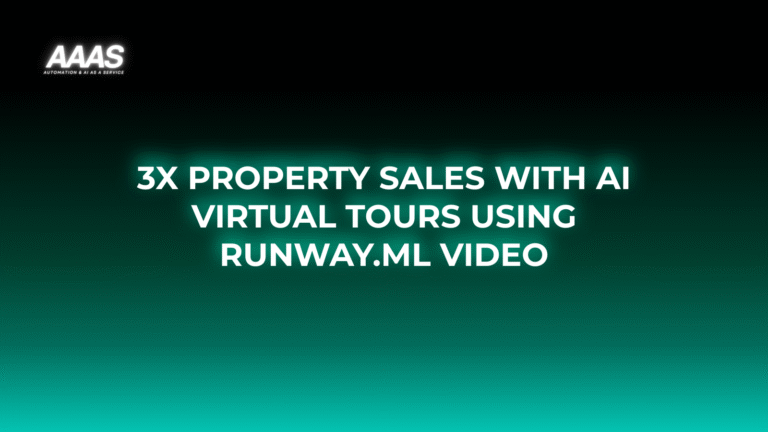Leveraging No-Code Automation and AI Integration for Scalable SaaS Workflows

Market Problem: Manual SaaS Workflows Hinder Scale
Modern SaaS businesses face exponential data growth, diverse customer requirements, and ever-increasing operational complexity. Relying on manual processes or code-centric workflow automation leads to:
- Bottlenecks and productivity losses
- Error-prone handovers and repetitive tasks
- Limited agility to adapt workflows or integrate new tools
- Costly developer or IT resource overhead
- Slow time-to-market for new features or integrations
As a result, scaling operations efficiently becomes challenging, directly impacting customer satisfaction and business growth.
Solution & Key Benefits of No-Code Automation & AI
No-Code Automation Platforms
No-code platforms like Zapier, Make (formerly Integromat), and Tray.io allow non-programmers to visually design and deploy automated workflows between SaaS apps and data sources without writing code.
Benefits
- Accelerate workflow deployment with drag-and-drop editors
- Democratize automation: empower business teams
- Easily iterate, scale, or pivot processes as needs change
- Simplify cross-app integrations spanning CRM, support, marketing, and more
AI Integration
With the rise of generative AI (e.g., OpenAI GPT-4), and ML-powered APIs, SaaS workflows can now include:
- Natural language data analysis for unstructured inputs (emails, chats)
- Automated content generation, enrichment, and classification
- Context-aware process branching and dynamic personalization
- Smart error handling and notifications
The result: significant reductions in manual work, task latency, and costly errors—while enabling true business agility.
Real Use Cases in SaaS
- Customer Support Routing: Use AI to classify support tickets by intent; auto-route to relevant agents via Zendesk, Intercom, or Slack channels.
- Lead Qualification: Parse inbound form submissions with AI, sync qualified leads to CRM (Salesforce, HubSpot), trigger personalized onboarding sequences.
- Churn Prediction & Retention: Analyze product usage with ML; auto-create churn alerts & interventions in Customer Success tools.
- Invoice & Payment Processing: Extract details from PDFs via AI OCR; automate reconciliation between Stripe and accounting platforms.
- Employee Onboarding: Automated task sequencing for IT, HR, and team provisioning across SaaS tools.
Explore further in Workflow Automation Best Practices.
Technical Details: How No-Code Automation Works with AI
Key Components
- Connectors: Pre-built integrations with SaaS apps (APIs, webhooks)
- Triggers & Actions: Event-driven initiators and outputs (e.g., “New Ticket in Zendesk” → “Send Slack Notification”)
- Conditional Logic: If/else rules, dynamic data mapping
- AI Modules: Plug in LLMs, OCR, or ML classification APIs (OpenAI, Google Cloud AI, Microsoft Azure AI)
- Human-in-the-loop: Automated tasks with optional manual approval steps
Secure & Scalable
Leading platforms follow strict security best practices (OAuth, granular permissions), enable local and cloud execution, and support versioning and audit trails for enterprise workflows.
Comparison: No-Code + AI vs. Traditional Automation
| Feature | No-Code + AI | Traditional (Scripted) Automation |
|---|---|---|
| Setup Time | Minutes to hours | Days to weeks |
| Flexibility | High (visual editors & easy API connect) | Medium (requires code changes) |
| Scalability | Built-in (cloud native) | Depends on dev resources |
| AI Capability | Native integrations, low-code | Custom integrations, dev-heavy |
| Cost | Predictable subscription | Dev + maintenance costs |
| Skill Level Required | Non-technical / power users | Developer, IT |
For more context, read No-Code vs. Traditional Automation.
Pricing Table: Leading No-Code Automation Platforms
| Platform | Free Tier | Paid Plans | AI Integrations | Scalability |
|---|---|---|---|---|
| Zapier | Yes (basic) | From $19.99/mo | OpenAI, NLP, custom API | High |
| Make (Integromat) | Yes | From $9/mo | AI modules, NLP, HTTP API | Very High |
| Tray.io | No | Custom pricing | AI connectors, enterprise-grade | Enterprise |
| Pegasystems | No | Custom pricing | AI & RPA fusion | Enterprise |
ROI-Focused Practical Examples
- Support Automation: Reduced ticket triage time by 45% with AI-augmented workflows (saving ~120 agent-hours/month in a 50-seat SaaS support team).
- Lead Routing Automation: Increased conversion rate by 30% by eliminating manual lead scoring, freeing sales teams for high-value engagement.
- Billing Reconciliation: Reduced finance FTE costs by automating invoice matching, saving $2,000/month in labor.
Implementation & Setup Steps
- Choose a no-code platform that matches integration needs and user skill levels.
- Map current manual workflows & identify automation opportunities.
- Design workflow in visual editor: set up triggers, actions, and AI modules.
- Connect SaaS APIs securely (OAuth, encrypted keys).
- Test automations with edge cases—leverage built-in error handling.
- Deploy with monitoring, alerts, and human-in-the-loop options as needed.
- Iterate and scale: expand to cross-team or multi-tenant workflows.
Pros & Cons
| Pros | Cons |
|---|---|
|
|
Expert Tips
- Start small—pilot automations in one department before expanding organization-wide.
- Leverage AI for data handling or classification, but use traditional logic for critical business rules.
- Document workflows carefully—including triggers, actions, and data flow—for future audits and compliance.
- Monitor usage and costs: set up alerts for high task or API volume usage.
- Regularly update integrations as APIs, security, or platform features change.
FAQ
- Can no-code automation handle enterprise-grade security and compliance?
- Many leading platforms are SOC 2, HIPAA, or GDPR-compliant, but always verify certifications and assess data flow risk for your business.
- What types of AI can I integrate?
- Most platforms offer native support or plugins for language models (OpenAI, Claude), OCR, text classification, sentiment analysis, or can connect via webhooks/API.
- Is vendor lock-in a real risk?
- Workflows built in platform-specific formats can be difficult to port; mitigate via standard API use and workflow documentation.
References & Citations
Last Updated







